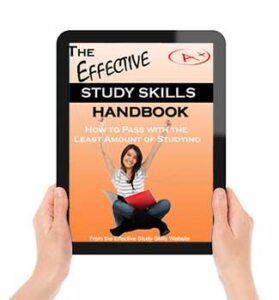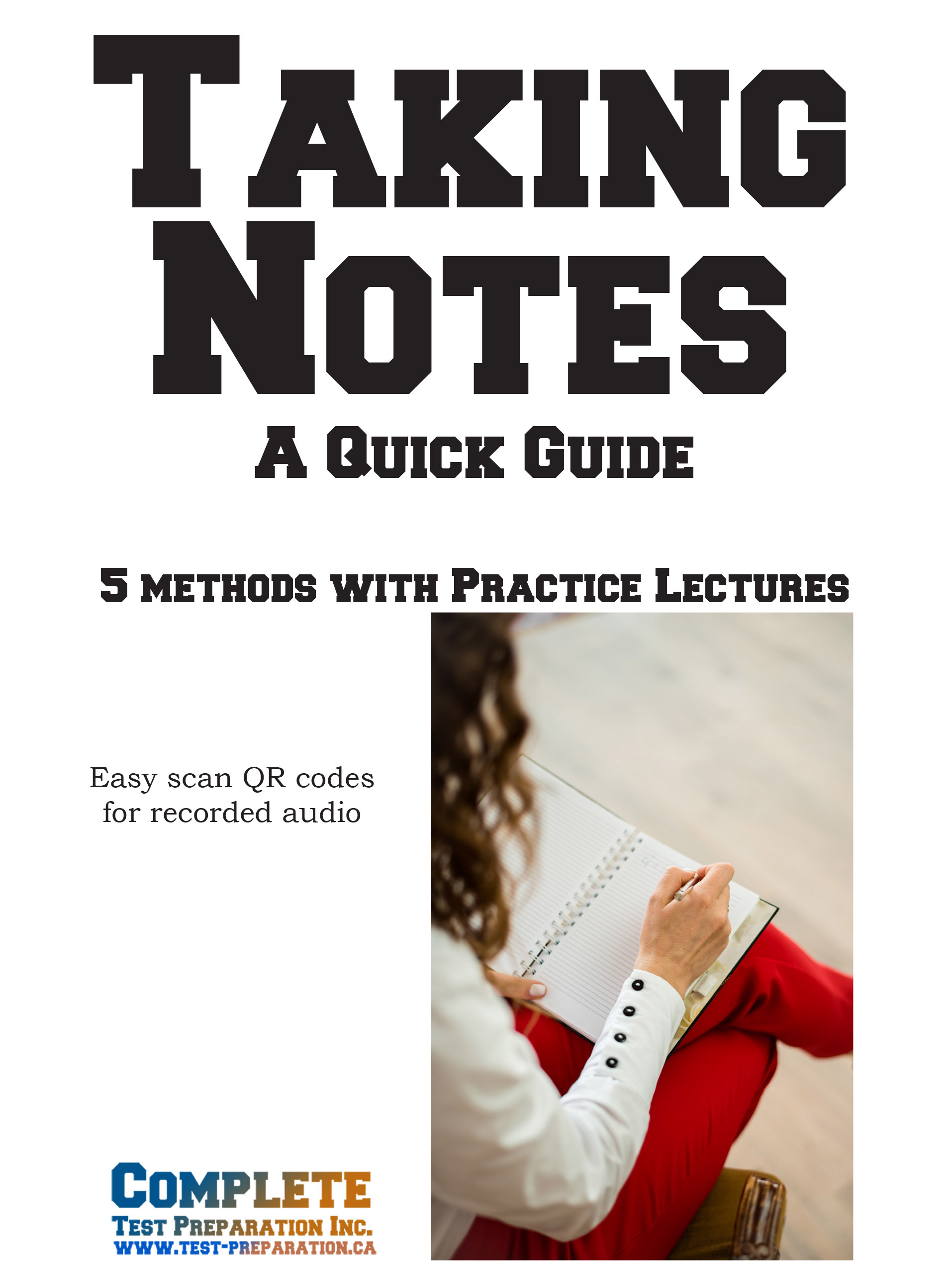
How to Manage your Time on a Standardized Test
- Posted by Brian Stocker MA
- Date December 11, 2006
- Comments 3 comments
Test Tactics — The Time Wise Approach to Taking a Test
Setting Time Priorities on a Timed Test
All exams impose time limits. You are given a general time-limit for the entire exam and a specific time-limit for every section of the exam. The key to acing lengthy exams is to always optimize the time you are given before the exam for studying and after the exam for answering.
Audio Version of this Post
Time Management Before the Test
Advanced Preparation. Never cram for an exam. Rome was not built in a day, and neither was the content of your exam. In other words, the material included on the exam was not covered in two or three hours, and it cannot be learned in that time. The best way to prepare for an exam is to make studying a daily habit. Reviewing your notes a little each day saves time and decreases your anxiety about the test.
Don’t Cram. Most Exams measure how much you have learned during your last four or five years in school. That said, preparation for exams cannot be done in one day, one week or one month. Always keep in mind that the best way to prepare for an exam is to make a habit out of studying.
Sometimes, you have to cram – so – if life happens and you absolutely must – here are some tips on how to cram.
Make use of your daily routine
Practice. Many standardized exams have practice versions of the test that are available online or at your local library. Use those practice exams to help you become familiar with the types of questions asked. You can also practice completing the exam sections within the time limits. This will help you prepare for the exam, and it will help you feel more relaxed when faced with the time limits. Practice tests are perfect practice for time management on the real thing.
Time Management during the Test
Reading Directions:
Review the directions of each section, making no assumptions about what is expected of you. Review sample questions and their instructions as well.
Computerized tests have a tutorial. Pay attention even though it may seem easy and you may think you know it. More on taking computerized tests.
Standardized tests are similar in form and therefore each section most likely has the same or similar directions. Familiarize yourself with the different kinds of questions that may come up in the exam you are about to take. Here are some Common Mistakes made on a Test.
Do not watch your watch
At best, taking an important exam is an uncomfortable situation. If you are like most people, you might be tempted to subconsciously distract yourself. One of the most common ways to do so is by becoming obsessed with your watch or the wall clock. Do not watch your watch! Take it off and place it on the top corner of your desk, far enough away that you will not be tempted to look at it every two minutes.
Better still, turn the watch face away from you. That way, every time you try to sneak a peek, you will be reminded to refocus your attention to the task at hand. Give yourself permission to check your watch or the wall clock after you complete half of each section. This keeps your attention on the questions, but gives you a general idea how your time is going.
Plan your approach.
If the exam is one in which you can skip around, rather than being stuck on one section at a time, find out what point values are assigned to each section. Work on the sections with the highest point values first so you can get the maximum points for your time.
If you cannot skip around, decide how you are going to work on the section. Will you skip questions you don’t know immediately? Work from start to finish, one at a time? Having a plan of action decreases your anxiety and helps you work within the time limit.
Prioritize the questions that are worth the most points or are the most difficult. Answer these questions first to ensure that you have enough time to complete them.
Handling Touch Questions
There are going to be questions that are difficult. First, don’t panic. Work steadily and methodically. If you find that a question is so dense you can’t figure out how to break it into smaller pieces, there are a few strategies that might help. First, read the question again and look for hints. Can you re-word the question in one or more different ways? This may give you clues. Look for words that can function as either verbs or nouns, and try to figure out what the questions is asking from the sentence structure. Remember that many nouns in English have several different meanings. While some of those meanings might be related, sometimes they are completely distinct. If reading the sentence one way does not make sense, consider a different definition or meaning for a key word.
The truth is, it is not always necessary to understand a question to arrive at a correct answer!
Eliminate
The most successful strategy for multiple choice is Elimination. This is a huge time saver. Frequently, at least one answer is clearly wrong and can be crossed off the list of possible correct answers. Next, look at the remaining answers and eliminate any that are only partially true. You may still have to flat-out guess from time to time, but using the process of elimination will help you make your way to the correct answer more often than not – even when you don’t know what the question means! More on multiple choice strategy and our new book, Multiple Choice Secrets
Get the Complete Guide to Studying
Get Organized and Get better MarksGet the Complete Guide to Taking Notes
Learn 5 note taking stylesTaking a Test? Complete Guide to Multiple Choice
Increase your Score on any Test!Pace yourself.
Work steadily and methodically. Don’t rush and don’t hang around. For most types of questions, it is better to answer the easy questions first, and then come back to the questions that take more time. For reading comprehension, read the essay first to keep from spending time looking for answers in the text. With all questions, if you find yourself spending too much time on one question, make a mark next to it and move on. You can come back to it later. It does you no good to spend so much time on one question that you run out of time with ten questions unanswered.
Use the scratch paper.
If you are given a blank piece of paper to use when taking the exam, use it. Complex mathematical problems will be solved more quickly and easily by writing them on the paper. You can write down formulas, patterns and other memory tricks that will help you as you take the exam.
Do not leave early
Use all the time allotted to you, even if you can’t wait to get out of the testing room. Instead, once you have finished, spend the remaining time reviewing your answers. Go back to those questions that were most difficult for you and review your response. Another good way to use this time is to return to multiple-choice questions in which you filled in a bubble. Do a spot check, reviewing every fifth or sixth question to make sure your answer coincides with the bubble you filled in. This is a great way to catch yourself if you made a mistake, skipped a bubble and therefore put all your answers in the wrong bubbles!
Become a super sleuth and look for careless errors. Look for questions that have double negatives or other odd phrasing; they might be an attempt to throw you off. Careless errors on your part might be the result of skimming a question and missing a key word. Words such as “always,” “never,” “sometimes,” “rarely” and the like can give a strong indication of the answer the question is really seeking. Don’t throw away points by being careless!
Budget your Review Time
Just as you budgeted time at the beginning of the test to allow for easy and more difficult questions, be sure to budget sufficient time to review your answers. On essay questions and math questions where you are required to show your work, check your writing to make sure it is legible.
Math questions can be especially tricky. The best way to double check math questions is by figuring the answer using a different method, if possible.
Answer all questions
Answer all questions, even if you are unsure of the answer. A few tests will penalize for wrong answers but very few. Make sure you find out! It’s better to make an educated guess than to leave a question blank.
Don’t get stuck
If you come across a difficult question, and find yourself spending too much time on one questions make an educated guess more on. Unless it is a computerized test, you can always come back to it later if you have time.
How to Study

… without endless hours of cramming
… without the need for tutoring
… and without sacrificing the things that matter to you!
Multiple Choice Secrets!

How to Take Notes
Learn 5 Note Taking Methods – With Full Explanation and Examples!
Taking notes is an essential academic skill and you will be doing a LOT!
Learn More and Start Practicing
Date Published: Monday, December 11th, 2006
Date Modified: Wednesday, July 17th, 2024
Tag:Time Limits
You may also like
Five-Day study plan – Ready for Blast Off Day!
Going into my senior year, one could assume that I am well experienced in the subject of test-taking, yet if anything, life has taught me that one can always learn more. My recent conversation with a friend helped me to …
How to Take a Test — the Basics How to Take a Test – 2 Common Mistakes on a Test – and how to avoid them! Written by, Brian Stocker MA., Complete Test Preparation Inc. Date Published: Monday, March 4th, …
What your Professor wants to see on your Exam
1. Get to know your instructors. Introduce yourself so that they know you and are aware that the course is vital to you. Make yourself visible – sit near the front of the class and attend regularly. 2. Give feedback. Everyone needs …


3 Comments
Those are helpful – I like to take my time on tests so I generally take much longer – any other advice?
I like finishing first then leaving… LOL I should probably check my answers but by that time I am so fed up I just have to get out of there
i have trouble with take a test for my ged my time run out on me